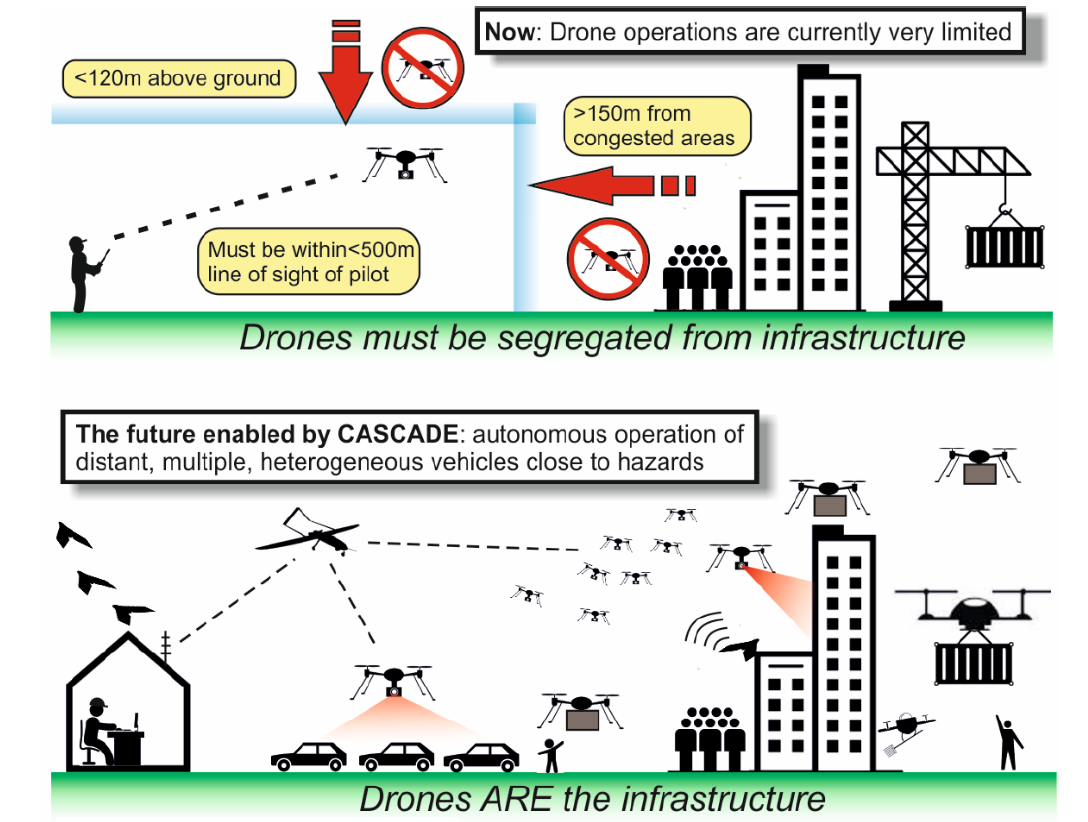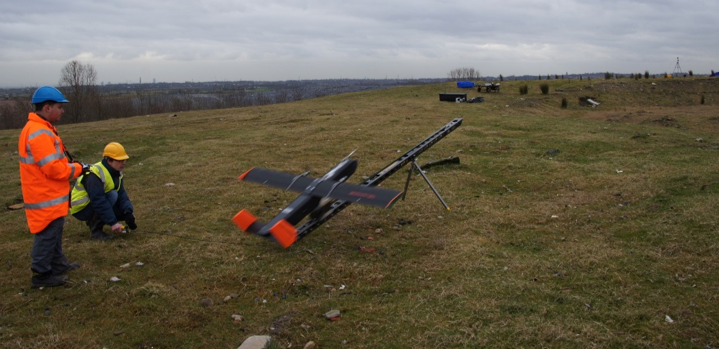
Our research
Bio-inspired vehicle technologies
Engineered flight vehicles routinely exceed the capabilities of natural fliers in terms of speed, payload and range, however there are many aspects of natural systems that are beyond current engineering capabilities, including the ability to easily reconfigure shape for different flight regimes, the ability to grasp and manipulate the environment through legs, feet and claws, the ability to undertake extreme flight manoeuvres for the purposes of predation or avoiding predation and landing/take-off, and the ability to refuel from within the environment.
This project area works principally in the area of biomechanics, with the goal of using understanding of biological systems to develop improved engineering solutions. Key contributions have been made to the understanding of the aerodynamics of flapping flight in birds and the dynamics of jumping take-off in birds.
Media coverage
Scientific American: What Birds Can Teach Us about Flying Robots
Audubon Magazine: How Birds Take Flight With Such Ease?
phys.org: Why Don’t Birds Fall Over When They Jump?
Computer Graphics World: Digital Flocks in film Noah (2014)
Key contact: Ben Parslew

CASCADE - safe scalability of drone operations
CASCADE is an EPSRC funded programme grant involving Manchester, Southampton, Bristol and Cranfield universities. Its goal is to accelerate the exploitation of aerial robotics across a wide range of science and industry applications through both fundamental research and applied case studies, and through this shape the technological and regulatory standards upon which a safe and commercially and scientifically vibrant industry can grow. The university of Manchester is responsible for the ‘Scalability’ research theme within the project, which concerns how drone operations can be safely scaled up in density and tempo by at least an order of magnitude in the next decade. We are also delivering the ‘Secure’ case study aimed at understanding how police forces can use drones as part of routine security operations in urban environments
Key contact: Bill Crowther

Environmental monitoring using unmanned aerial systems
The use of remotely piloted vehicles for atmospheric measurements and sampling is a rapidly developing field. We have led the way in use of unmanned fixed and rotary wing vehicles for inflight measurement of gas concentrations. Work was commissioned by the UK environment agency to establish feasibility of use of ‘drones’ for aerial measurement of landfill methane emissions, leading to definition of a standard procedure to be used nationally for legal quantification of methane emissions.
Key contact: Peter Hollingsworth

HOME Offshore - aerial robotic systems for maintenance of offshore wind farms
HOME Offshore is a research project funded by the UK Engineering and Physical Sciences Research Council (EPSRC) involving five leading UK universities. The project investigates the use of advanced sensing, robotics, virtual reality models and artificial intelligence to reduce maintenance cost and effort for offshore windfarms. Our work is focused on development of aerial robotic systems for visual and penetrating radar inspection of wind turbines. We are interested in understanding how introduction of novel robotic technologies can reduce the overall lifetime cost of offshore wind power, principally by reduction in the need for human operators to be present at the point of inspection.
Position paper: Technology Drivers in Windfarm Asset Management, 20 June 2018
Key contact: Bill Crowther

Insect-scale flapping-wing vehicles
Flapping-wing flight at insect scale is prevalent in nature but currently represents a grand challenge in engineering. The problem is both that of understanding – how do flapping wings at that scale work? – and that of technology – how can we make engineering systems at small scale that can efficiently drive and control flapping wings?
The present project has successfully delivered a series of landmark papers that provide a solid theoretical foundation for understanding the aerodynamics of flapping wings and integration with micro-scale piezoelectric propulsion systems. We now understand that most of the behaviour of flapping wings at insect scale can be described using classical aerodynamic theory, with suitable modifications. This provides engineers with an analytical toolset through which vehicles at this scale can be for the first time designed in the same way as more familiar large-scale-flight vehicles.
Related news:
New Scientist: Maths explains how bees can stay airborne with such tiny wings
Forbes: Jumping SpiderBots And BeeBot Pollinators
BBC: How a spider jumps on its prey – science has the answer
Key contact: Mostafa Nabawy
MAGMA flight demonstration programme
The MAGMA project is a collaboration between the University of Manchester and BAE Systems with the goal of developing and flight demonstrating novel technologies for next generation flight vehicles.
The project is built on a 15-year partnership through which a series of PhD studies has developed world leading capability fluidic flight controls for reduced signature flight vehicles.
The MAGMA flight demonstration programme is the latest phase of the project and has involved the development of a series of 4m wing span, 60kg all-up-weight jet-powered demonstrator aircraft. The vehicle design, manufacture and integration was undertaken by postgraduates and research staff at the University.
The vehicle first flew in conventional mode in September 2017 and was exhibited on the BAE Systems pavilion at Farnborough Air Show 2018. The next phase of the project will involve demonstration of improved carefree handling in a finless configuration and integration of surface mounted energy harvesting systems for wireless sensors.
(Flight control systems developed and integrated by Swiftflight Avionics)
News:
BAE Systems: First Magma flight trials
The Engineer: Magma flapless UAV
Key contact: Bill Crowther

MAGMA flight test
Opportunities
Explore the options for research in Aerospace Vehicle Systems and how to apply.
Meet the team
Details and contacts for our academic staff, post-docs and PhD researchers.

